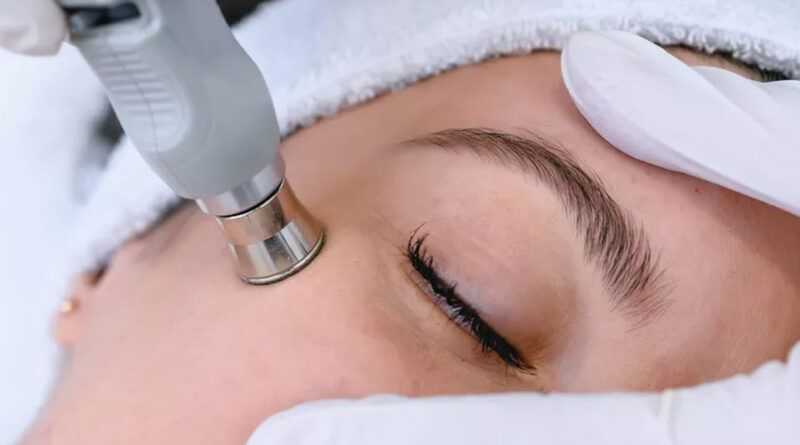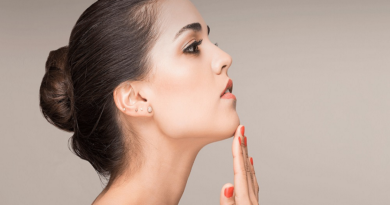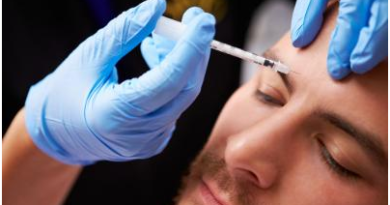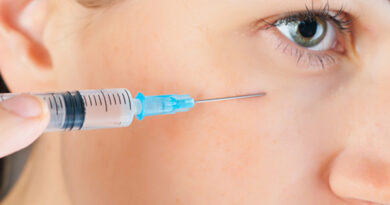Red Light Therapy: Harnessing Photobiomodulation for Anti-Aging and Skin Rejuvenation
Red light therapy (RLT) is a groundbreaking approach in skin rejuvenation and anti-aging. This therapy uses specific wavelengths of red and near-infrared light to stimulate cellular processes. Originally developed for medical uses, it has grown in popularity for skincare and wellness applications. RLT enhances cellular energy, promoting healthier, younger-looking skin. Unlike other treatments, it is non-invasive, making it safe for most people. The benefits extend from reducing fine lines to improving skin texture. In recent years, RLT has become a go-to option for those seeking natural, effective skin care.
The Science Behind Red Light Therapy
Understanding Light Wavelengths and Skin Penetration
RLT relies on specific light wavelengths, typically between 630-660 nm for red light and 810-850 nm for near-infrared light. These wavelengths penetrate the skin, reaching deep into cells and tissues. Unlike ultraviolet light, red light does not damage skin. Instead, it works harmoniously with the body’s natural processes. By penetrating the skin, red light can impact cells directly, boosting their ability to repair and regenerate. This makes RLT unique among light-based therapies, targeting skin health at a cellular level.
Mechanism of Action: ATP Production and Mitochondrial Health
Red light therapy stimulates the mitochondria, the “powerhouses” within our cells. Mitochondria use red light to produce more adenosine triphosphate (ATP), the cell’s energy source. Increased ATP production helps cells repair faster and function better. This boost in cellular energy encourages collagen production, enhancing skin elasticity and firmness. The process provides energy for other skin-rejuvenating functions, giving cells the resources they need to thrive.
Cellular Benefits of Photobiomodulation
Photobiomodulation improves cellular health, helping skin cells operate optimally. Cells exposed to red light become more resilient, reducing signs of aging. The therapy also minimizes oxidative stress, which can damage skin over time. Reducing this stress supports clearer, more radiant skin. Consistent RLT can lead to long-term improvements in skin tone and texture. The cellular benefits make red light therapy a powerful tool for maintaining youthful skin.
Key Anti-Aging Benefits of Red Light Therapy
Stimulation of Collagen Production
Red light therapy promotes collagen production, essential for youthful skin. Collagen provides structure to the skin, preventing sagging and wrinkles. As we age, collagen production slows, resulting in less firm skin. RLT stimulates fibroblasts, cells responsible for producing collagen. Increased collagen helps maintain skin elasticity, reducing the visible signs of aging. With regular treatments, users often see firmer, smoother skin.
Reduction of Fine Lines and Wrinkles
Fine lines and wrinkles form as the skin loses collagen and elasticity over time. RLT helps reduce these signs by promoting collagen synthesis, which strengthens the skin’s structure. With stronger skin, fine lines and wrinkles become less noticeable. Many people use RLT as a natural alternative to invasive treatments for wrinkle reduction. The results can vary, but regular use leads to visible improvements in skin smoothness.
Enhancement of Skin Elasticity and Firmness
Elasticity allows skin to return to its original shape, while firmness provides a youthful look. RLT enhances both by supporting collagen and elastin production. Elastin, like collagen, decreases with age, leading to skin laxity. By boosting these proteins, RLT helps keep the skin supple and resilient. Over time, users often notice their skin feels tighter and looks more toned. This improvement in elasticity adds to the anti-aging effects of red light therapy.
Skin Rejuvenation Effects of Red Light Therapy
Improved Skin Texture and Tone
Red light therapy encourages healthy skin turnover, resulting in smoother texture and more even tone. Regular treatments help reduce pigmentation, giving skin a balanced look. Uneven tone and rough texture often stem from dead skin cells or discoloration. RLT addresses these issues by promoting cellular regeneration. This results in a fresher, more uniform skin appearance that contributes to overall skin rejuvenation.
Enhanced Wound Healing and Scar Reduction
Red light therapy accelerates healing, making it effective for treating wounds and scars. By energizing cells, RLT encourages quicker skin repair and reduces scar visibility. Wounds treated with red light tend to heal with less discoloration and scarring. This benefit makes RLT valuable for individuals looking to improve skin texture after injuries. The therapy’s ability to support natural healing processes aids in achieving smoother, clearer skin.
Reduction of Inflammation for Acne and Rosacea Relief
Inflammation causes redness, swelling, and discomfort, especially in conditions like acne and rosacea. RLT has anti-inflammatory properties, helping to calm skin and reduce visible irritation. For acne-prone individuals, RLT may reduce breakouts and redness. The soothing effects make it a gentle, non-chemical option for sensitive skin. Consistent use may lead to healthier-looking skin, with fewer flare-ups and reduced redness.
Red Light Therapy vs. Other Light-Based Treatments
Comparing Red Light to Blue Light Therapy for Skin Health
While red light focuses on rejuvenation, blue light targets acne-causing bacteria. Red light penetrates deeper, benefiting anti-aging, while blue light remains surface-level, addressing breakouts. Some users combine both for comprehensive skin care. However, each therapy has its unique strengths and should match the user’s primary skin goals.
Differences from Laser and Intense Pulsed Light (IPL) Therapies
Laser and IPL therapies use concentrated beams of light for skin resurfacing and pigmentation issues. Unlike RLT, they often require downtime and may cause discomfort. Red light therapy is gentler, suitable for daily use, and involves no recovery period. Patients looking for non-invasive options often prefer RLT for its ease of use and minimal side effects.
When to Choose Red Light Therapy Over Other Options
Red light therapy suits those seeking gradual, gentle improvements in skin health. People with sensitive skin or those avoiding downtime may find RLT appealing. Compared to stronger treatments, RLT takes longer for visible effects but maintains a safety profile suitable for all skin types. Consulting a skincare specialist helps determine when RLT fits best within an individual’s routine.
Practical Applications of Red Light Therapy
Professional Treatment Options (Dermatologist, Spa Clinics)
Dermatologists and spa clinics offer professional-grade RLT devices that provide powerful results. These treatments typically involve stronger light sources than home devices, delivering faster effects. Clinics tailor sessions to individual needs, enhancing effectiveness. Professional guidance also ensures safe, consistent outcomes. Patients often choose clinics for comprehensive treatments, especially for targeted anti-aging results.
At-Home Devices: Pros, Cons, and Key Considerations
At-home devices offer convenience but may have lower light intensity than clinical options. Users appreciate the flexibility of home use, although results may take longer. Choosing an effective device involves checking wavelength range and safety certifications. Home RLT suits maintenance after initial professional treatments or gradual, mild results. Understanding device limitations helps users set realistic expectations.
Choosing the Right Device: Wavelength, Intensity, and Safety Standards
Wavelengths between 630-850 nm are most effective for skin rejuvenation. Higher intensity typically means faster results but may require professional guidance. Many at-home devices offer adjustable settings, allowing users to find their comfort level. Safety standards, such as FDA approval, indicate quality and efficacy. Ensuring proper wavelength and certification helps users make informed choices for optimal outcomes.
Clinical Studies and Research Insights
Summary of Recent Research on Red Light Therapy for Anti-Aging
Recent studies confirm red light therapy’s effectiveness in reducing wrinkles and improving skin texture. Research shows consistent improvement in skin elasticity and tone among regular RLT users. Studies suggest that increased collagen and ATP production significantly contribute to anti-aging benefits. Continued research aims to refine understanding of ideal treatment protocols. This promising evidence positions RLT as a natural tool in anti-aging routines.
Efficacy of Red Light Therapy in Skin Rejuvenation
Skin rejuvenation studies reveal that RLT boosts cellular turnover, improving overall skin health. Patients in clinical settings show enhanced healing rates and reduced pigmentation issues. Regular RLT use leads to smoother, more youthful skin over time. While results vary, studies confirm noticeable improvements within months. RLT offers a safe option for those seeking non-invasive skin enhancement.
Notable Studies on Safety and Long-Term Benefits
Safety studies indicate minimal side effects when RLT devices follow recommended protocols. Long-term research shows sustained skin improvements with regular use. Some studies explore RLT’s broader health effects, expanding its potential uses. Continued research on device efficacy helps refine treatment approaches. By documenting long-term benefits, these studies build trust in red light therapy.
3 Practical Tips for Red Light Therapy Success
- Selecting Appropriate Wavelength and Duration for Results: Use devices within the 630-850 nm range, adjusting for skin needs.
- Consistency in Treatment: Establishing a Routine: Regular sessions yield better results; aim for consistency over frequency.
- Monitoring Skin Response and Adjusting Usage as Needed: Track improvements and modify intensity or frequency for personalized outcomes.
Frequently Asked Questions (FAQ)
Is red light therapy safe for all skin types?
Yes, RLT is generally safe for all skin types. However, consult a dermatologist if you have specific skin concerns.
How long does it take to see visible results?
Most users notice improvements within a few weeks, with optimal results in three months.
Can red light therapy help with acne scars?
Yes, RLT can help reduce acne scars by promoting healing and enhancing skin regeneration.
Are there any side effects to be aware of?
RLT has minimal side effects, mainly mild redness. Always follow device instructions to avoid overuse.
The Future of Red Light Therapy in Skincare
The future of red light therapy holds exciting possibilities, with ongoing advancements in technology and accessibility. Innovations aim to make RLT more effective and convenient for at-home users. As research expands, RLT may become a mainstay in personalized skincare. Clinics like Fountain of Youth SWFL are already exploring its wide applications. With continued development, RLT will likely play an increasingly valuable role in skin health and anti-aging.
References
Red Light Therapy: Effectiveness, Treatment, and Risks
WebMD provides an overview of red light therapy, discussing its potential benefits for skin health, including anti-aging effects and treatment of various skin conditions.
Red Light Therapy: Benefits, Side Effects & Uses
The Cleveland Clinic explores the uses of red light therapy, highlighting its role in stimulating collagen production and improving skin elasticity.
The Mayo Clinic discusses various skin rejuvenation techniques, including laser treatments, and their effectiveness in reducing wrinkles and improving skin texture.
This study from the National Center for Biotechnology Information examines the effectiveness of red and near-infrared light therapy in enhancing skin appearance and collagen density.




